Newborn elephant baby at Zürich Zoo
Asian elephant baby Ruwani, born on February 25, 2017 at 120 kilograms of weight, is one of the star attractions at Zürich Zoo at this time. “A very lively young lady, she’s already skillfully using her trunk for a variety of tasks which is exceptional at her age,” explains Dr. Robert Zingg, Senior Curator at Zürich Zoo. (Watch the short video clip in the sidebar). “Normally, young elephants trip over their own trunks.” Ruwani had expert teachers: her mother Farha, who was also born at the zoo, and grandmother Ceyla-Himali. Elephant babies are continually nudged to their feet during the first two days in order to stay with the herd in the wild, and poor Ruwani had mother and grandmother making sure she wasn’t laying down. She was dead tired by the end of the second day says Dr. Zingg, but is caught up on sleep by now.

It is estimated that in the wild, there are 30, – 50,000 wild Asian elephants remaining, living in small groups across thirteen Asian countries. The animals are endangered by continued loss and destruction of natural habitat due to agricultural expansion, wood harvesting, and poaching. Zürich Zoo’s elephant park is named after Thai national park Kaeng Krachan, where the zoo is supporting an ecological program to save the remaining two hundred animals in the park.
Many more exciting on-site animal and nature exhibits await young and old alike and “to see the personal attachment of a young visitor to a particular animal is always heartening,” say Dr. Zingg. The curator continues: “while the traditional way is to visit the zoo with parents and/or grandparents as a child – then with your class during the school years – to have privacy with your girlfriend as a young person – and finally as a parent and grandparent with your own child – one should visit the zoo even as an adult by oneself. There are many interesting and beautiful experiences to behold, many of which are of meditative quality. Or can have a fun note, like the ladies group that took to an Orang Utan, visiting her regularly, conversing with her and dedicating a poem on her birthday”.
Interesting tidbits of history at Zürich Zoo
Pre-history started in 1902, when the former foreign minister to Abessinia, Swiss born Alfred Ilg, donated two lions (the emblem of the city) to the city of Zürich in gratitude for having been able to study at ETH university. No suitable place to house the lions was available and the animals moved in with Zoo Basel. It did start the discussion in Zürich, however, and in 1925, a group of animal lovers formed into a society with 3,000 members who purchased the beautiful property and current zoo site. Zürich Zoo opened in 1929 with many donated animals among which two Asian elephants from group of Swiss Abroad who were adamant that the zoo should not open without “one of its best attractions”!
During Second World War, the zoo rented land to grow its own grain, potatoes and corn to feed the animals.
In 1954, a zoo keeper visits sick children at the hospital with a llama.
In 1968, the King of Bhutan presents Zürich Zoo with two elephants.
In 1982, Jane Goodall honored Zürich Zoo with a visit and observes the zoo’s chimpanzees.
To the Confederation’s 700 year birthday in 1991, India presents the zoo with two Indian lions.
Zürich Zoo camels at the city of Zürich’s most important ceremony
Zürich Zoo regularly lends two or three camels to the “Kämbel Zunft” (guild) for participation at the annual spring Sechseläuten festival in Zürich, which entails the yearly burning of the Böög (a large carton snowman) as a symbol of ousting winter. The city’s guilds form a procession, many in traditional dress going back to the 13th century. The Kämbel guild entailed the tradespeople during the middle ages: vegetable, fruit, salt and wine. How come a camel ended up being their heraldic animal? It’s an interesting story, partly based on the fact that in the late middle ages, angora-goats were called “Kämeltier” which resulted in a later vernacular mis-translation, but by then, the camel was already enshrined in the coat of arms. And based on all the misunderstanding you have it today that camels from Zürich Zoo are trained well in advance of the event, going on private little walks in the woods behind the zoo with their keepers and then also throughout the city!
Social and Ecological Engagement
Zürich Zoo reliably ranks within the top three out of 113 European zoos in the bi-annual U.K. Sheridan rating. It is well-known for its diversity of animals in spectacular settings, closely reproducing natural habitat. It also wins further acclaim in the category “Education, Nature- und Species Protection.”
Since 1991, Dr. Alex Rübel is director of the zoo and a new master plan with goals until the year 2030 was developed. While the Zoo area doubles to 78 acres, the number of species decreases to allow for larger enclosures. Rather than showing more species, the ecosystem became the focus and also included the animals’ opportunity to withdraw into private areas. The zoo was divided into several geographical zones – Eurasia, South America, Africa and the Masoala Rain Forest, named after the national park in northeastern Madagascar, which has become the zoo’s largest of its global six ecological project.
Working together with World Conservation Society on site in Madagascar, Zürich Zoo plants yearly 60,000 trees in the Masoala region, supports the lives of 35,000 people in nearby communities, implements sustainable methods of rice planting, develops infrastructure and trade for crafts, facilitates children’s education, the infrastructure for fresh water supply and pays the salary of three rangers. These compound activities help to maintain the Masoala region which is one of three globally most diversified living species biotopes and part of UNESCO world nature heritage. Many plant and animal species are exclusive to this region. Approximately 90% of Madagascar’s rain forest are already lost. Rainforest burnings to create short-term growing areas (unsustainable due to the immediate erosion), illegal wood cutting and animal killings are the greatest problems.
Masoala Biotop at Zürich Zoo and Masoala National Park in Madagascar, supported by Zürich Zoo
The football-field size re-created biotop walk-through Masala Rain Forest at Zürich Zoo is a unique project in Europe if not globally, and the visitor truly get a sense and feel of what the diversity of a rainforest really is, in plants and animals. The visitor can’t help have a much greater visceral understanding of what the destruction of rainforest really means.
Zürich Zoo Vision
“We are moving progressively toward becoming a nature conservation centre,” says Curator Dr. Zingg. “All animals at the zoo today are ambassadors for their species. Our aim is to foster a connection for city folks who are becoming increasingly more remote from nature. We want to facilitate an emotional connection between our visitors and the animals they meet here in the best possible way, in the hope that it has a positive effect on the visitor’s understanding regarding the importance of our world’s biodiversity. At Zürich Zoo, we try to be the best catalyst we can be to contribute toward this important objective, however, the task is up to all of us and society as a whole to maintain the biodiversity of our world.”
Share your experience – childhood or recent – if you’ve visited Zürich Zoo. You can leave a comment below.

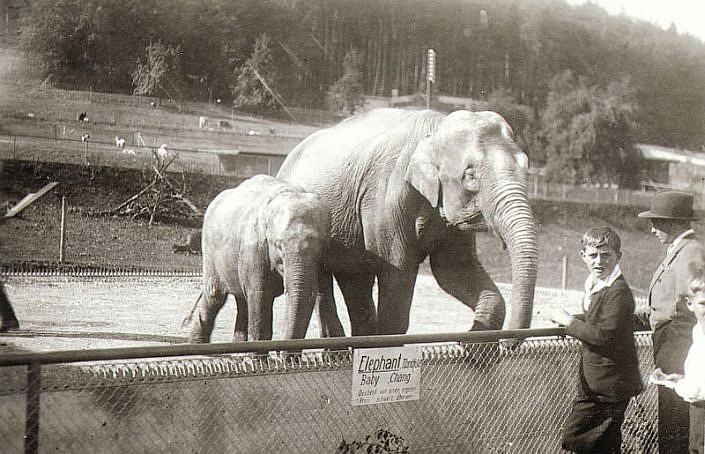
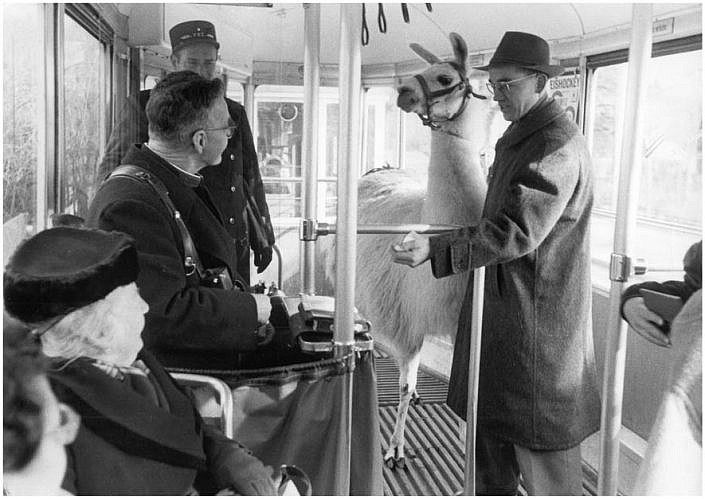






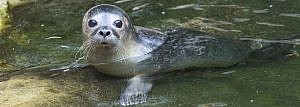
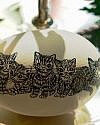

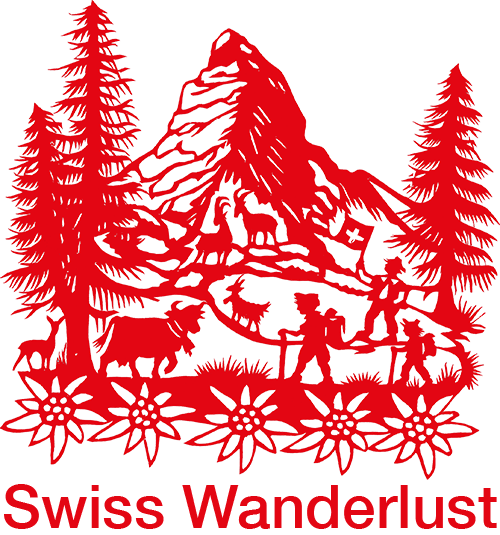



Leave a Comment Below
Your email address will never be shared. Your comments make my day. Thank you!More from Swiss Wanderlust
Very unique Easter tradition in Ferden/VS
Swiss Easter traditions - old & new
Pegasus Zürich where Easter bunnies & Santas rendez-vous
Sent, Ftan, Guarda & Schellen-Ursli
Of tree stands & Christmas mice
Santa traditions in Switzerland
Swiss Christmas traditions
Start your backyard composting this fall
Wild mushroom foraging in the Pacific Northwest
Quality olive oil - a Croatian grower's tips
Experience Croatia with Silvia
Vitra Design Campus: fun, funky, functional furniture
Berger bell foundry Bärau
Brunni-Bahnen Engelberg - unbound nature experience
Water Castle Hallwyl: opera under the stars
World's largest Swiss flag
Swiss Armed Forces at 4 Day March, Nijmegen/NL
Amsterdam unique sightseeing tips
Amsterdam one-house-bridge-hotels
Cheeses of Switzerland
Im Gummiboot durch die Schweiz
«Geschichten & Gekochtes» – 60 Jahre Gastronomie-Erlebnisse
Alois Carigiet - art, graphic design & Schellen-Ursli
Waldhaus Sils - superb five star hotel
Mili Weber Museum St. Moritz
Fifties family hike in Switzerland
Schweizer Schule Alexandrien, Ägypten
Four highly recommended Swiss films
SWISSWOOD Alphorns & Engel-Chörli Appenzell
Kloster Kappel, Kappel am Albis
Beromünster Radioweg
Schweizer Radio und Fernsehen: Vertraute Stimme aus der Heimat
Roger Federer, social entrepreneur in high profile tennis
Light of Peace
Swiss National Soup Day and other amazing community stories
Glasi Hergiswil
St. Nicholas arrival - Samichlaus Auszug
Emmental Christmas market
Zürich Gourmet Trams
Grittibänz & Christmas cookies
Zürich Public Transportation - Holiday Dinners, Sightseeing, Books
Die Pracht der Tracht - Swiss Traditional Costumes
Justistal Chästeilet
Basel Tattoo - the world's second largest
Brächete and autumn market in Zäziwil
Onsernone Valley - wild, evocative and fascinating
Helsinki-Shanghai: 9,700 kilometers or 150 hours by train
Unspunnen festival
Ronco: Porto-Ronco/Ronco sopra Ascona
Risotto Festival Locarno
Einfach leben - Pianta Monda
SJAS childrens' camps in Switzerland
Paradiesli vacation chalet owned by an exceptional jodeler
Geographical center of Switzerland - Älggi Alp
Schweizer Regiokrimis sind Bestsellers
Aecherli Pass: Sennen hospitality & wild haying
Historic motorcycle race Seebodenalp, Switzerland
Restaurant zum Kropf - hearty Zürich cuisine in 16th century ambiance
Hotel Adler in Old Town Zürich: quaint Swissness
Swiss National Day August 1, in- & outside Switzerland
Dettling Kirsch - the world's finest cherry brandy
Mehl und Brot, Macht und Geld im alten Zürich
Zürich to Milan via the new Gotthard Base Tunnel
Fretz Men: top quality Swiss-made footwear
Oeschinen Lake - UNESCO World Cultural Heritage region
Swiss Annina Altherr - Yukon Government Youth Climate Change Ambassador
Bauer Fritz - Idyllic farm B&B near Luzern
Zürich wine region: vineyards, white asparagus and wilderness
Appenzell Landsgemeinde - Open-air Parliament in Appenzell
Sechseläuten in Zürich
European Girls' Mathematical Olympiad EGMO
Palmsonntag mit zwei Eseln
Glacier Express - legendary rail journey in total comfort
Hotel Alpenblick Berne where guests return as friends
Urbärn a cappella quartet sings gorgeous Swiss folk songs
Graubündel - the hip new Swiss pic-nic bag!
Zürich Zoo: Transition to Nature Conservation Center
Restaurant blindekuh: dining in pitch-black darkness
Rudy Canonica: Swiss shepherd in the Bernese highlands
Gret Zellweger - Appenzell Multi-Talent Folk Artist
Koller International Auctions Zürich and Geneva
TOPtoTOP climate change expedition
Alaska dog sledding with an Appenzell-Swiss
100th birthday of Ruedi Walter, Swiss radio/TV and film star
Swiss Armed Forces Culinary Team wins cooking competitions
Mummenschanz - the legendary Swiss mime company on tour again
Meinrad's Puppen & Bärenklinik (Doll & Teddybear Clinic)
Conelli's enchanting Christmas Circus
Zürich Chamber Orchestra ZKO
Luzern Hotels: Montana Art Deco Hotel
Luzern B&Bs: Idyllic Baroque house for two
Züri Tirggel - a traditional Swiss Christmas cookie
Migros bus - when grocery stores had wheels
Zürich Cafés: Felix at the Bellevue
Zürich B&Bs: Scandinavian cabins
Zürich Hotels: Hotel Waldhaus Dolder
Rasa, Ticino: Jewel of a village on the mountaintop
Vent Negru: traditional folk music from the Ticino (sound samples)
A drive around Lake Geneva, by guest writer Sandra Grote